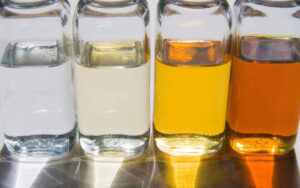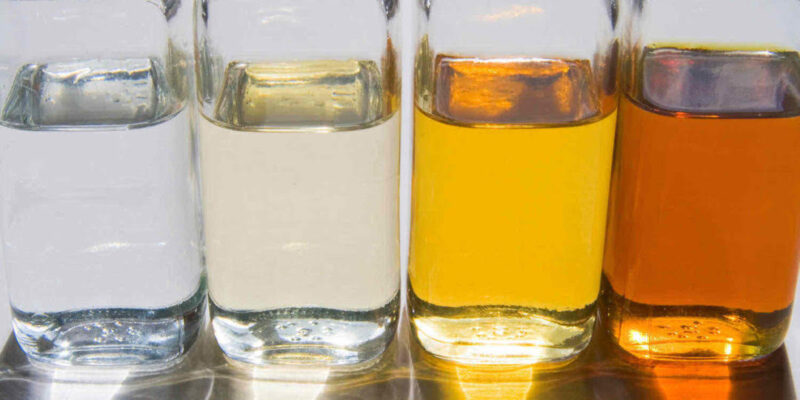 In most instances lubricating oil is a blend of base oil and additives with the base oil content being anything between 70 percent and more than 99 percent depending on the final application of the lubricant. Base oils may be mineral, synthetic or semisynthetic – a mixture of mineral and synthetic stocks. Most lubricating oils used globally (more than 90 percent) are blended using mineral base oils. Feed stocks from a number of streams at crude oil refineries are processed at base oil refineries to produce various viscosity grades of mineral base oils. A typical mineral base oil refinery will have the following units to produce suitable quality base oils:
In most instances lubricating oil is a blend of base oil and additives with the base oil content being anything between 70 percent and more than 99 percent depending on the final application of the lubricant. Base oils may be mineral, synthetic or semisynthetic – a mixture of mineral and synthetic stocks. Most lubricating oils used globally (more than 90 percent) are blended using mineral base oils. Feed stocks from a number of streams at crude oil refineries are processed at base oil refineries to produce various viscosity grades of mineral base oils. A typical mineral base oil refinery will have the following units to produce suitable quality base oils:
- Solvent Extraction to remove undesirable aromatic (unsaturated) compounds which are unstable and cause the formation of tar, varnish and carbon in engines.
- Propane De-asphalting removes asphaltic material from the base stocks to minimize the formation of deposits in machinery, and
- Dewaxing to improve low-temperature fluidity of the base oil.
These three (extraction) conversion processes generally produce Group 1 base oils with aromatic content between 15 and 20 percent. The colour of Group 1 base oils would normally vary from a light yellow to straw. The quality of such base oils can be further improved by a number of Hydrofinishing Processes. Hydrofinishing changes the remaining unsaturated/aromatic compounds in the oil by a chemical reaction involving hydrogen and produces base oil with improved chemical stability, lower sulphur content and much lighter colour. The final quality of the base oil is determined by the severity of the application, temperature and pressure in the hydrofinishing process and will normally be classified Group 2 or Group 3 base oils. The quality and characteristics of modern Group 3 base oils approach that of synthetics.
Synthetic base oils are manufactured from chemical building blocks and excel mineral oils in viscosity index, shear stability, low and high temperature performance, oxidation stability and volatility. A major disadvantage of synthetics is that they cost approximately 3 to 5 times more than mineral oils. They therefore tend to be used in specialty applications only where the performance of mineral oil is considered unsatisfactory. Typical examples are very high temperature applications and extended oil drain intervals.
The most commonly used synthetic oil is polyalphaolefin (PAO). PAO’s are classified Group 4 base oils and are used in a wide variety of automotive and industrial applications such as engines, transmissions and hydraulic systems. The use of Group 5 base oils (typical synthetic esters) are limited to very special applications such as refrigeration compressor oils and aviation turbine lubricants. The table below shows the general differences between the various Groups.
Mineral and synthetic base oils are produced in a number of viscosity grades. For instance, low viscosity (thin) base oils would be used to produce automatic transmission fluids whilst thick, heavy ones are required to blend ISO 680 viscosity grade gear oils.
A final word of advice: avoid mixing different oil Groups. In an emergency situation, mineral oils may be mixed with PAO’s, but Group 5 synthetics should preferably not be used with any other oil Group.

All Q8Oils lubricants produced by Blue Chip Lubricants are blended exclusively from imported Q8 base oils that are manufactured from Kuwait Export Crude. Most petroleum products are derived from crude oil which, as a natural material, has a tendency to vary in type and quality depending on its source. Kuwait Export Crude is however unique, its consistency and superior quality make it the perfect feed-stock for refining high quality base oils. Q8 base oils are hydro-finished using a unique process that removes any remaining impurities rendering them clear, pure and very oxidation stable.
With complete control of our raw materials we can guarantee a consistency of product quality matched by few other companies and our customers can have complete confidence in the performance of our products.

